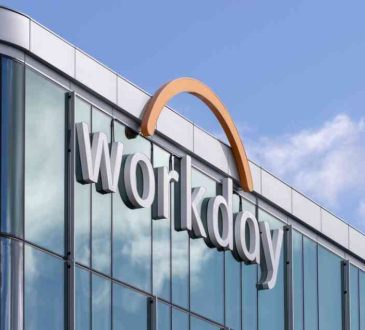A Case Study at Beating Amazon at the Platform Game: Building a Successful Commercial Platform

Living in the US, it’s easy to believe that the Amazon retail platform will eventually eat retail altogether. Its advantages are well known, sellers seemingly cannot avoid it (much as they may want to), and Amazon itself is transitioning from its own retail operations into a marketplace platform. It seems invincible. But it is possible to beat Amazon at its own game – to build a platform that does more for its customers and suppliers than Amazon, and one that’s not easily captured even by Amazon’s normal strategies like underpricing.
Gearflow has built just such a platform to serve construction industry’s $55 billion parts segment, which makes and distributes parts for big manufacturers like John Deere and Caterpillar. There are a few big parts houses, and thousands of smaller ones. All these suppliers serve the construction industry, where companies range from enormous (e.g. Bechtel) to mom-and-pop local operations with a bulldozer. In between are thousands of small and medium-sized companies.
All these companies need parts for their equipment, both when they break and for regularly scheduled maintenance. The average order at Gearflow is large – almost$1,000. While contractors can and do buy from Amazon, it’s often a frustrating experience. According to Luke Powers, Gearflow’s CEO, suppliers using the Amazon platform say that return rates are as high as 35%. That’s disastrous for contractors – the cost of idling a big crane can run $350/hour. But it’s also terrible for the vendors, given the high shipping costs and heavy inventory expenses.
Gearflow is challenging Amazon by providing a better experience: expertise that cuts return rates, flat and predictable fees for vendors, an open pathway to customers, and it’s building tools so customers can manage maintenance schedules better.
- Expertise. Gearflow helps contractors identify the right part the first time around. It’s return rate is around 2%, and in some cases much lower. Jim Lehman, of Romac Industrial Parts, explains that Gearflow has deep industry expertise and that this helps match parts to heavy equipment in ways that a simple catalog cannot. “Heavy equipment buckets change out all of the time; it is not as simple as, ‘what is the make and model’ – it’s critical to understand for example the specific dimensions of cutting edges and the spacing of bolt holes, as well as the pocket dimensions of the bucket teeth. Gearflow knows that and can help customers find exactly the right part.” Effectively, Romac and similar companies are outsourcing some of their customer service to Gearflow – and are very happy to do so.
- Pricing. Gearflow charges a 9.75% sales commission but does not charge suppliers for listing on the site, and no fees at all for its customers. It currently doesn’t sell advertising on its site, so that burden is also absent (Amazon Marketplace sellers on average pay 7.5% of revenues for advertising). Lehman noted that the flat fee commission structure makes cash flow much more predictable, especially given low returns.
- Customer Access. Amazon’s terms of service completely forbid sellers to contact customers off the Amazon platform, and tightly limit contacts within it. Gearflow provides suppliers with complete information about their customers on the platform – a huge benefit in an industry where long-term relationships are critical.
- Management tools. Gearflow plans to provide contractors with free electronic tools to manage their equipment, including detailed maintenance schedules as recommended by manufacturers. As there is no industry-standard set of tools, this would be especially helpful for small and medium-sized contractors like Nick Niebauer, who would be very interested if that toolset was available. And that helps cement their linkage to Gearflow.
Gearflow has only been around since mid-2018, but Powers’ family has been in the parts business for more than a generation. He saw the opportunity based on the specific needs of the sector and the deep expertise it required. Gearflow raised an initial round of capital (about $1.2 million), and is now seeking a seed round of about $3 million, to accelerate the onboarding of new parts into the system – it currently has about 1.2 million parts in the catalog, but there are 14 million more waiting to be connected (as with most modern asset management systems, Gearflow uses API’s and CSV files to connect electronically to supplier databases).
Maybe Gearflow’s platform won’t succeed in the long run. Perhaps customers will disintermediate the platform and just look for the lowest price once they know which part is required. Perhaps Amazon will see an opportunity and use the one weapon really at its disposal – lower prices. Perhaps Gearflow will screw up in some major way. All these are possibilities.
But Gearflow shows Amazon can be beaten if the battle is not fought on Amazon’s home ground: mass market products where price is the main purchasing factor. While Amazon does offer tools for sellers to improve their product pages with videos, spec sheets, and other materials, there’s no real place for the expertise that could guide purchasers to the right part in the first place. User reviews help, but sorting through them is tedious and often misleading (especially given Amazon’s problems with review gaming).
It turns out, then, that there are seven keys to building a competitive alternative to the Amazon platform:
- Find a niche. Amazon kills in mass market products. The niche has to be one where expertise matters, and where brands still have some clout.
- Offer vendors a better deal than Amazon. That can mean lower listing fees, and avoiding near-mandatory advertising.
- Connect suppliers to customers directly. Don’t hoard customers by blocking the connection from customers to suppliers.
- Find a high-value segment. Average order size has to be high enough to sustain deep customer support.
- Use dropship only. Don’t try to compete with Amazon on shipping – because you can’t. Just let the suppliers take care of that through direct shipping to the customer.
- Eliminate returns. Returns are a sign that the information flow has failed – the customer thought they needed something and then found they didn’t, or were sold the wrong item, or otherwise lacked the information to make the right decision. Returns are hugely expensive for vendors, and very frustrating (and expensive) for buyers.
- Cement your supplier relationship. Aside from pointing to the right part, Gearflow is deepening its connection to suppliers by providing more additional valuable services.
There are no promises here. Amazon is a formidable competitor, and the parts market is big enough to be worth fighting for. But around 35% of parts are already sold online, and that share will only grow, so there’s a rich reward for snaring even a modest share of it, and Gearflow seems to be showing that there are ways to take on the big guns. And this is a model that can be applied elsewhere – in medical equipment for example.
Written by Dr. Robin Gaster.
Have you read?
World’s Best Countries – Cultural Heritage Influence.
World’s Best Countries – Retirement.
World’s Most Forward-Thinking Countries.
World’s Best Countries For Raising Kids.
World’s Most Entrepreneurial Countries.
Add CEOWORLD magazine to your Google News feed.
Follow CEOWORLD magazine headlines on: Google News, LinkedIn, Twitter, and Facebook.
Copyright 2024 The CEOWORLD magazine. All rights reserved. This material (and any extract from it) must not be copied, redistributed or placed on any website, without CEOWORLD magazine' prior written consent. For media queries, please contact: info@ceoworld.biz








